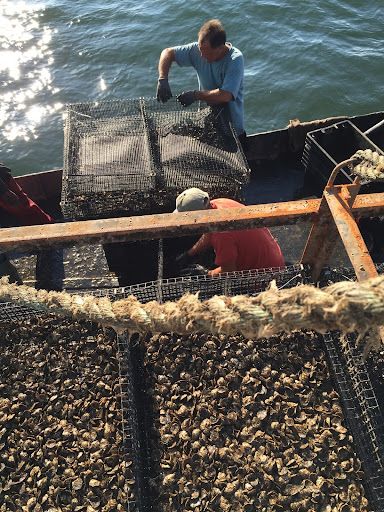When practiced and managed well, shellfish and seaweed aquaculture can provide sustainable seafood and improve the surrounding environment. These kinds of aquaculture farms act as nursery habitats, increasing recruitment of fish to fisheries, while removing excess nutrients from marine waters. A new study by NOAA scientists and their partners assigns dollar amounts to these valuable benefits.

The researchers examined nutrient removal by aquaculture in 17 countries and fish habitat data from 10 countries. The team also used data from the Milford Lab’s GoPro Aquaculture Project, an effort that uses underwater camera footage to understand interactions between shellfish aquaculture gear and fish communities. The study also uses ongoing NOAA research on the water quality benefits of shellfish aquaculture.
As shellfish feed, they remove nitrogen by filtering it out of the water and using it to build their shells and tissues. Seaweeds also remove nutrients from the surrounding environment via photosynthesis. The researchers assigned dollar amounts to nutrient removal services using payments made for nutrient credits in areas where nutrients such as nitrogen are managed. They also assigned dollar amounts to the avoided costs of traditional ways of remediating excess nutrients—for example, upgrading water treatment plants. Considering 49 estimates, shellfish and seaweed farms removed an average of about 575 pounds of nitrogen per acre. For shellfish, the value of that ecosystem service is estimated at $1,321–7,739 per acre each year. The range for seaweed aquaculture is $753–10,110 per acre each year.
The researchers compiled data from 26 different studies to estimate the value of habitat provided by shellfish and seaweed aquaculture on a global scale. They compared fish abundance between aquaculture and natural sites. Abundance per fish species was 1.6 times higher on farms compared to other habitats. Aside from creating places to forage and hide from predators, farms serve as nursery habitat for young fish. As a result, fish production at farms was enhanced by an average of about 94 pounds per acre of extra fish each year. The additional fish produced could be worth $618 per acre each year to commercial fisheries, or $779 per acre each year to recreational fisheries.
These findings indicate that shellfish and seaweed aquaculture is not only a low impact and sustainable form of food production, but also has the unique ability to contribute towards broader goals of ecosystem recovery and resiliency.
The project is a collaboration between a multi-national team of researchers at NOAA, The Nature Conservancy, University of Melbourne and the University of Adelaide in Australia, the University of Maryland Extension, and Mississippi State University.
Read more in this NOAA Fisheries article.
